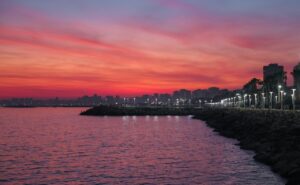Ancient Wonders Revealed at the Mysterious Machu Picchu
Machu Picchu, an Inca civilization testimony to skill and tenacity, is perched amid the stunning peaks of the Andes Mountains. World visitors and explorers have been captivated by this mysterious citadel that has been hidden for generations. I’m always in awe of it because of its beautiful masonry, accurate astronomy, and seamless integration with the surrounding scenery.
Read more: Top 10 Gay-Friendly Destinations
A metropolis abandoned to time
It is still unclear where Machu Picchu came from. The Inca ruler Pachacuti is said to have had it built as a private retreat in 1450, according to historians. Before being inexplicably abandoned in the 1570s, shortly before the advent of the Spanish conquistadors, the city flourished for a century, housing between 750 and 1,000 people.
Location was an important factor in the preservation of Machu Picchu. Hiram Bingham, an American explorer, discovered the city in 1911 after it had been hidden away in the dense cloud forests of the Urubamba Valley. Centuries of secrecy had been effectively maintained about Machu Picchu thanks to its isolated position and the thick, surrounding jungle.
Read more: Afghanistan: A Tapestry of Culture, History, and Resilience
The Inca Architecture’s Masterwork
The remarkable engineering prowess of the Incas is demonstrated by the architectural wonders of Machu Picchu. Deep knowledge of astronomy and astronomical alignments is reflected in the layout of the city. At the Temple of the Sun, which marks the longest and shortest days of the year, the solstices coincide with the carved stone pillar known as Inti Watana, which is thought to have functioned as a sundial and observatory.
Machu Picchu is a testament to the Incas’ skill with stonework. Using neither cement nor metal tools, the city’s walls, terraces, or temples are built with exquisite detail. With their smooth stonework, the building has endured the test of time and is strong and resistant to earthquakes.
Read more: Tracing 1000 Years of History in Rome
An Aligned Combination with Nature
The natural environment is intermingled with Machu Picchu’s design. Rich agricultural land was offered by the city’s terraces, which were carved out of the mountain’s steep slopes, while the nearby forests gave resources for construction, food, and medicine. Careful planning and construction ensured minimum disturbance to the fragile ecosystem, demonstrating the Incas’ profound regard for nature.
A knowledge of the natural components is also evident in the design of the city. Drainage systems efficiently divert rainfall away from the city, preventing erosion, and Machu Picchu is angled to maximize sunlight and ventilation. Ecological wisdom and environmental sensitivity are demonstrated by the Incas’ harmonious interaction with nature.
Read more: New York City: Diversity in Culture and Experience
Unknown and Wonderous Legacy
The continuing charm of Machu Picchu is found in its surrounding unanswered mysteries as well as in its architectural magnificence. Historians and archaeologists continue to disagree over the cause behind its demolition, the function of its construction, and the cultural activities that occurred inside its boundaries.
There is still wonder and conjecture around the city’s elaborate stonework, elaborate sculptures, and celestial alignments. It causes tourists to wonder what knowledge and skills the Incas possessed, given that they built such a spectacular citadel without the use of modern technology.
A Tour Of Historic Wonders
A trip through time that provides an insight into Inca society is exploring Machu Picchu. Imagine the flurry of bustle that once filled the city as you stroll around its terraces, temples, and residential neighborhoods. There are remnants of the past all around, but the city is quiet and peaceful now, a far cry from its vivacious past.
Popular tourist site Machu Picchu draws visitors from all over the world and is recognized as a UNESCO World Heritage Site. A testimony to the Inca civilization’s inventiveness and cultural legacy, the city’s significance and beauty have made it a symbol of Peru.
A realm of historic marvels opens out for visitors as they climb the steps that lead to Machu Picchu. Adventurers and visitors are enthralled with the city’s mysterious aura, architectural wonders, and harmonious coexistence with nature, leaving a lasting impression on their hearts and minds.
Reminding us of the eternal force of human imagination and creativity, Machu Picchu is a timeless beauty that also serves as a tribute to the Inca civilization’s brilliance and tenacity. It is a source of inspiration, calling on visitors to set off on an adventure filled with wonder and discovery among the stunning peaks of the Andes Mountains. Adventurers and visitors are enthralled with the city’s mysterious aura, architectural wonders, and harmonious coexistence with nature, leaving a lasting impression on their hearts and minds. Time appears to stop still at Machu Picchu, where the spirit of the Incas still whispers through the old stones, providing a haven of peace amid the bustle of the outside world.






Pingback: African Safar